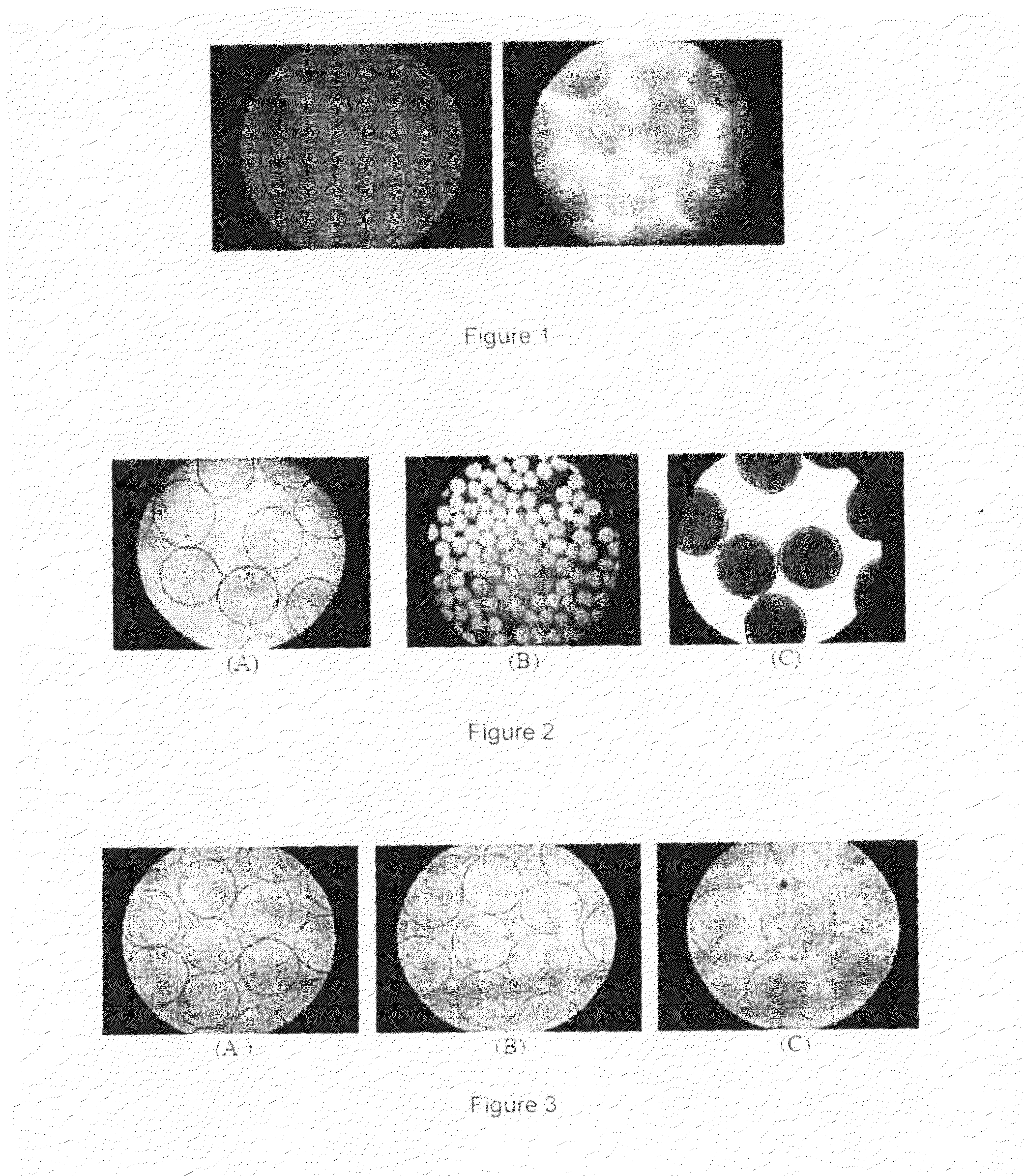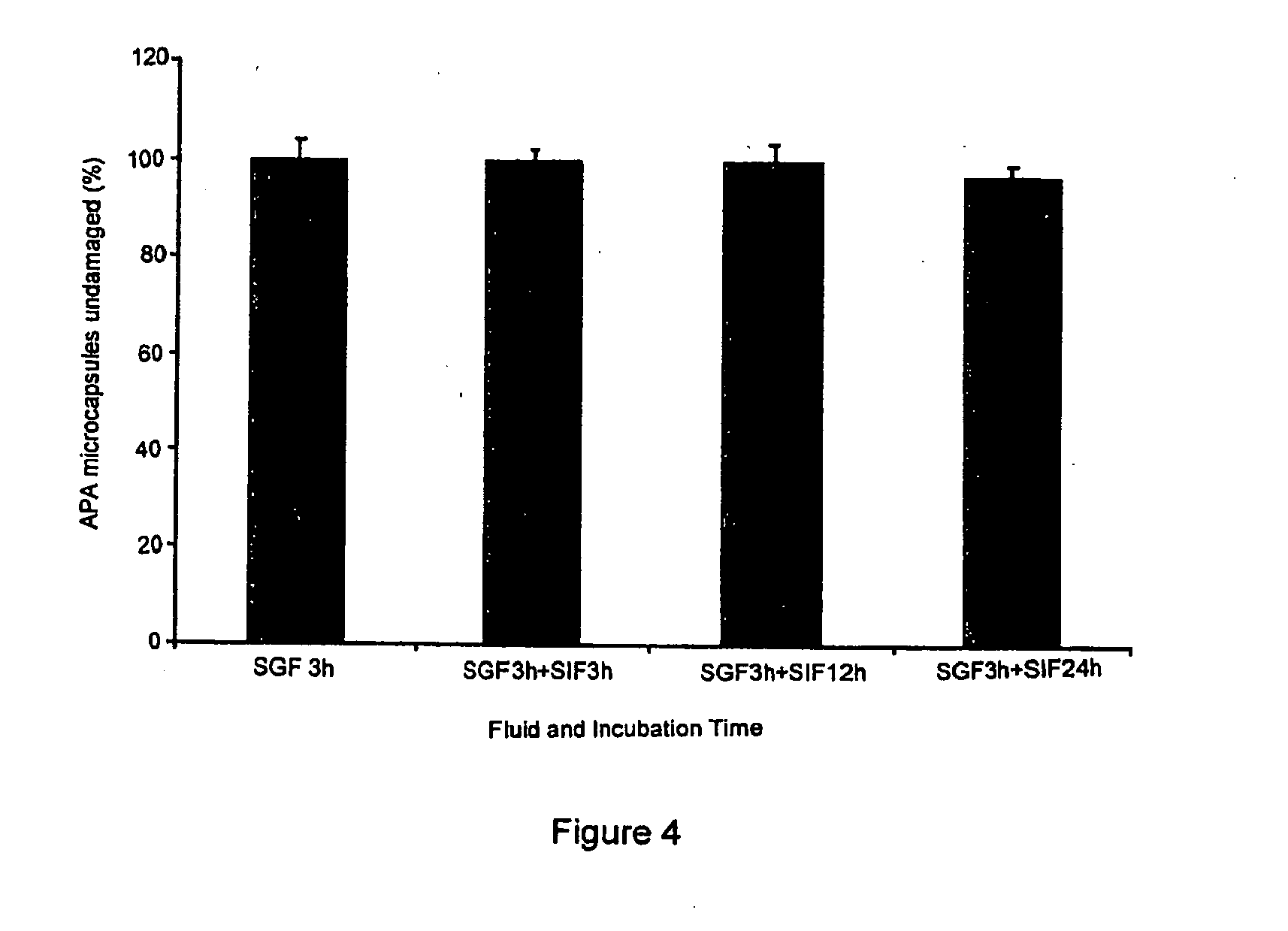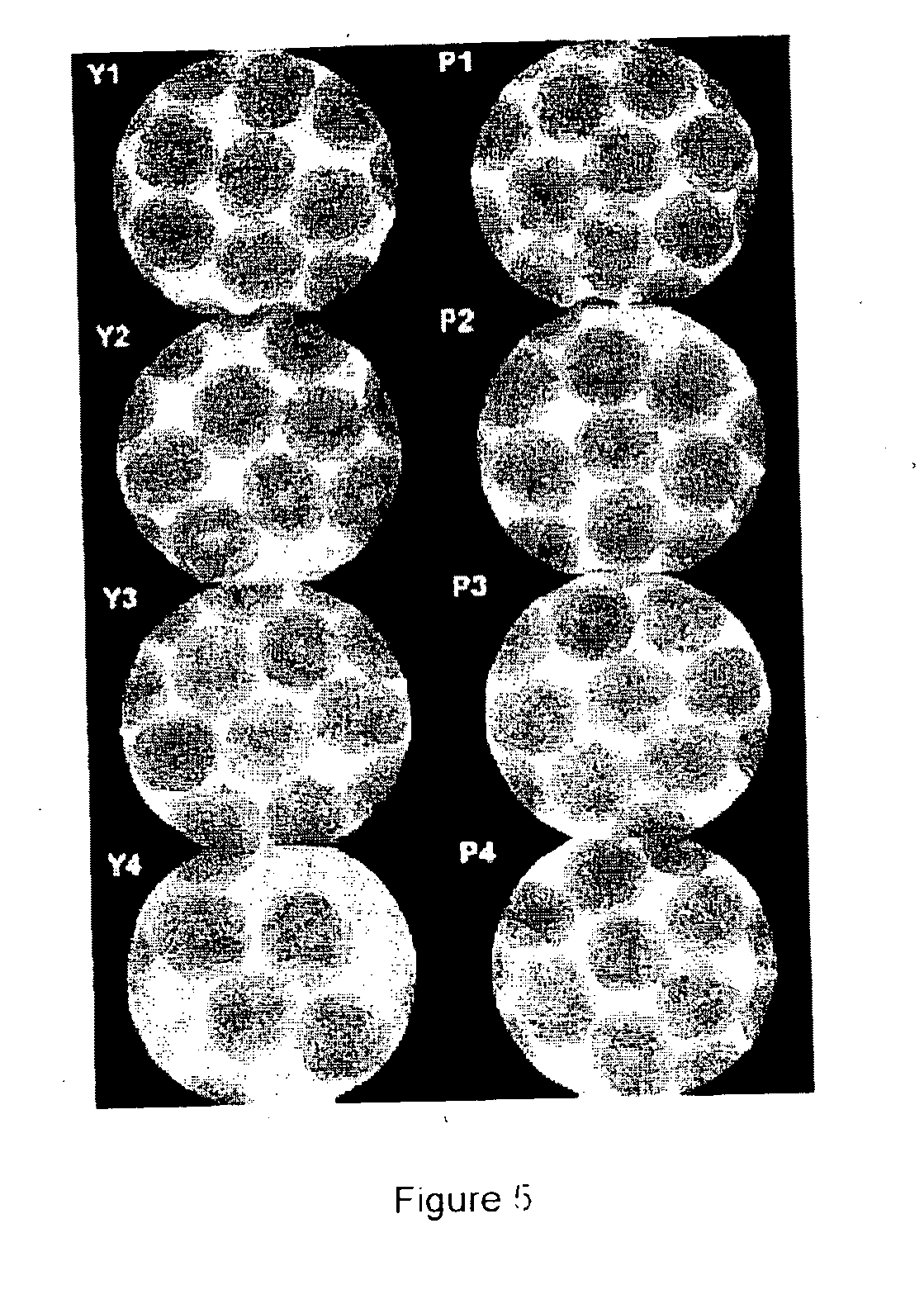Fermented milk product and use thereof
a technology of fermented milk and probiotic yogurt, which is applied in the field of fermented milk products, can solve the problems of insufficient level of live bacterial cells in probiotic yogurt to provide maximum benefit, the use of this technology in probiotic yogurt formulations containing live bacteria has not yet been investigated, and the transit of free bacteria through the gastrointestinal tract is often problemati
- Summary
- Abstract
- Description
- Claims
- Application Information
AI Technical Summary
Benefits of technology
Problems solved by technology
Method used
Image
Examples
example 1
Microencapsulated L. acidophilus Cells Survival in Yogurt and Microcapsule Permeability Study
[0109]Studies were designed to investigate APA encapsulated bacterial cell survival in probiotic yogurt. FIG. 5 shows photomicrographs of APA microcapsules loaded with L. acidophilus cells. Pictures Y1 to Y4 were taken weekly over a period of 4 weeks and show APA microcapsules stored in 2% M.F. plain yogurt exposed to mechanical shaking at 100 rpm at 4° C. Photomicrographs P1 to P4 show APA microcapsules stored in 0.85%, physiological solution, over 4 weeks, stored under similar conditions of 4° C. and shaking at 100 rpm. This 4-week study revealed that APA microcapsules loaded with L. acidophilus cells preserve their shape and integrity over time. The survival of encapsulated L. acidophilus over the 4-week study is shown in FIG. 6(A). There was a constant drop observed in bacterial cell survival and it reached 7.53 log cfu / g of live bacterial cells after the fourth week of testing. This is ...
example 2
Materials and Method
[0123]Sodium alginate (low viscosity), poly-1-lysine (MW=27,400) (lot 71K5120) and calcium chloride (desiccant, 96+%, A.C.S. reagent, FW 110.99, d 2.15, batch # 05614AC) were purchased from Sigma-Aldrich, Canada. MRS AGAR Difco™ Lactobacilli and MRS BROTH Difco Lactobacilli were purchased from Becton, Dickinson and Company Sparks, USA. Chitosan 10 was from Wako Chemicals, Japan. Liberty plain yogurt 0% and 2% M. F. containing active Acidophilus and Bifidus cultures was procured from a local store.
[0124]Bacteria Cultures, Propagation and Enumeration
[0125]L. acidophilus (ATCC 314) cells were inoculated in 100 mL of MRS broth. The bacteria were cultured in MRS Broth at 37° C. in a Professional Sanyo MCO-18M Multi-Gas Incubator. Cultures were grown for 24 hours and centrifuged at 3000×g for 15 minutes at 37° C. The media was decanted; the cells were suspended in 100 mL of fresh MRS media and incubated for an additional 20 hours at 37° C. After growth was performed, t...
example 3
Materials and Methods
[0145]Sodium alginate (low viscosity), poly-L-lysine (MW=27,400) (lot 71K5120) and calcium chloride (desiccant, 96+%, A.C.S. reagent, FW 110.99, d 2.15, batch # 05614AC) were purchased from Sigma-Aldrich, Canada. MRS AGAR Difco™ Lactobacilli and MRS BROTH Difco™ Lactobacilli were purchased from Becton, Dickinson and Company Sparks, USA. Liberty plain yogurt 2% M. F. containing active Acidophilus and Bifidus cultures was procured from a local store.
[0146]Lactobacillus acidophilus (ATCC 314) cells were cultivated and serially propagated three times in the MRS medium before experimental use. Incubations were performed at 37° C. in a Professional Sanyo MCO-18M Multi-Gas Incubator in anaerobic conditions (1-2% CO2, Atmosphere Generation System AnaeroGen™; Oxoid Ltd., Hampshire, England). Bacteria to be encapsulated were isolated after 20 hours of the 3rd passage.
[0147]Microencapsulation Method
[0148]The bacterial strains were microencapsulated into Alginate-Poly-L-Lys...
PUM
| Property | Measurement | Unit |
|---|---|---|
| Mass | aaaaa | aaaaa |
| Mass | aaaaa | aaaaa |
| Degradation properties | aaaaa | aaaaa |
Abstract
Description
Claims
Application Information
 Login to View More
Login to View More - R&D
- Intellectual Property
- Life Sciences
- Materials
- Tech Scout
- Unparalleled Data Quality
- Higher Quality Content
- 60% Fewer Hallucinations
Browse by: Latest US Patents, China's latest patents, Technical Efficacy Thesaurus, Application Domain, Technology Topic, Popular Technical Reports.
© 2025 PatSnap. All rights reserved.Legal|Privacy policy|Modern Slavery Act Transparency Statement|Sitemap|About US| Contact US: help@patsnap.com



